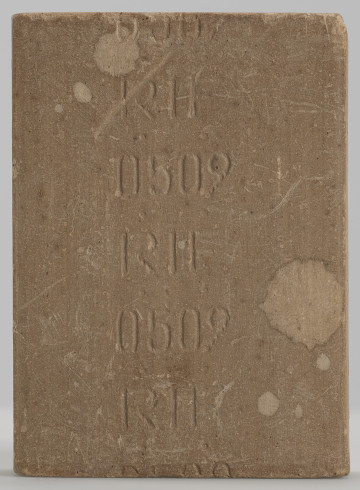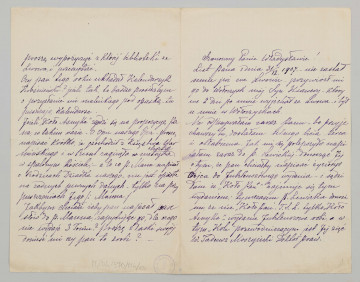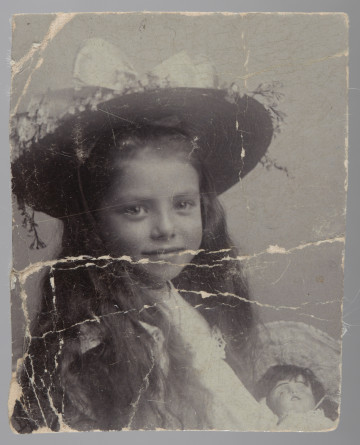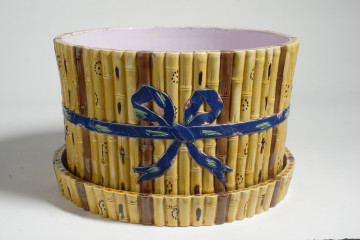
Soap
1940 — 1944
Museum of the history of Polish Jews
The collection of mementoes from the Lodz ghetto donated to the POLIN Museum belonged to a Jewish woman who worked in the Housing Department (Ger.: Wohnungsabteilung). The department managed the housing management in the ghetto (mainly dealing with the accommodation of the Jews displaced to the ghetto and the search for premises for the emerging departments and labour departments). During the occupation, Łódź was incorporated into the German Reich, becoming part of the administrative region called the Warta Country (Ger: Watherland). The Lodz Ghetto (Litzmanstadt Ghetto; https://sztetl.org.pl/pl/miejscowosci/l/497-lodz/116-miejsca-martyrologii/48287-getto-w-lodzi) was finally isolated from the rest of the city on April 30, 1940 r. They were located in the most neglected part of Łódź (Bałuty and the Old Town). In the area of just 4.13 km2, at its peak, as many as 180 thousand people, which resulted in widespread hunger and high mortality. The Litzmanstadt Ghetto survived until August 1944, being the longest-functioning ghetto in Poland. The fact that the ghetto was kept for a long time resulted from its specific nature, the scale of forced labour and the profits generated by the factories operating in the ghetto. In 1943-1944, there were over 100 factories in the Lodz ghetto, and the number of people employed there increased to 95%. These factories were called "departments" (German: Arbeitsresort) by the ghetto inhabitants. The Yad Vashem Memorial Institute reports that Artur Greiser (governor of the Warta Country), during a trial in Poland in 1946, testified that the Łódź ghetto was one of the most important industrial centres in the Reich and that the authorities earned millions of marks thanks to the forced labour of the Jews (https: //www.yadvashem.org/education/other-languages/polish/educational-materials/ghetto-lodz/history.html, accessed on April 14, 2021).
The collection of souvenirs from the Łódź ghetto preserved by the woman include an armband with the name of the department for which she worked, a coin bound in a metal bow, a small leather purse and an assignment soap from the ghetto with the inscription "RIF" and a number embossed on it. After the end of the war, the woman left for Vienna for good, where she took a box containing the above-mentioned souvenirs with her. The objects accompanied her until the end of her life as a kind of relics. After the woman’s death (in 2011), the friend who looked after her handed over the items to a friend (donor) who, as an educated historian, was to give them due care and respect. After four years, he decided to donate the items to the collection of the POLIN Museum. The woman’s name is unknown.
Marta Frączkiewicz
Znaleziono 4 obiektów

National Museum in Lublin

1901
Museum of the history of Polish Jews

XIX/XX wiek, 2nd half of the 19th century
Castle Museum in Łańcut
DISCOVER this TOPIC
Museum of King Jan III's Palace at Wilanów
DISCOVER this PATH
Educational path